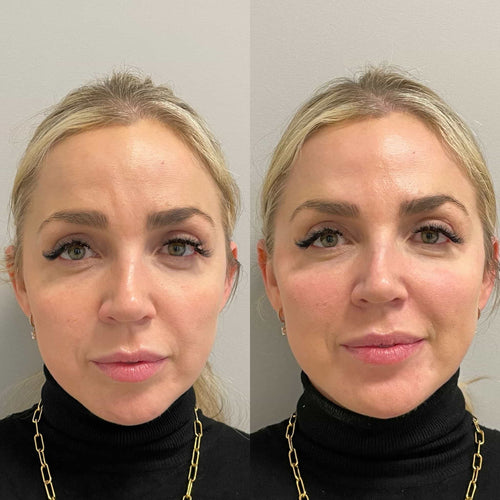Book a Dermal Filler Appointment with Dr. Laura Geige Today
## Understanding Nasolabial Folds
Nasolabial folds are the creases that run from the sides of your nose to the corners of your mouth. They are a natural part of facial anatomy and become more prominent with age due to factors like skin thinning, loss of collagen and fat, and changes in facial muscle structure.
While genetics play a role in the depth and appearance of nasolabial folds, weight gain can contribute to their prominence. When you gain weight, excess fat is distributed throughout your body, including the face. This added fat can plump up the cheeks, making the contrast between the cheek and the nasolabial fold more noticeable.
It’s important to note that weight loss doesn’t necessarily eliminate nasolabial folds. While reducing overall body fat can make them less prominent, they may remain due to factors like skin elasticity and underlying facial structure.
The relationship between weight gain and nasolabial folds is complex and individual. Some people notice a more pronounced deepening of their nasolabial folds with weight gain, while others experience minimal changes. Factors such as facial bone structure, muscle tone, and skin type can all influence how weight gain affects the appearance of these folds.

What are Nasolabial Folds?
Causes of Nasolabial Folds
The Impact of Weight Gain on Nasolabial Folds
Nasolabial folds, also known as smile lines or laugh lines, are creases that run from the sides of the nose down to the corners of the mouth.
Their formation is influenced by a combination of factors:
- Genetics: The shape and depth of nasolabial folds can be largely determined by an individual’s genetic makeup. Some people are predisposed to having more prominent folds than others.
- Aging: As we age, our skin naturally loses collagen and elastin, the proteins that provide structure and elasticity. This leads to sagging skin and the deepening of existing wrinkles, including nasolabial folds.
- Facial Expressions: Repeated smiling, frowning, or talking can contribute to the formation of nasolabial folds over time. These repetitive movements create grooves in the skin.
- Sun Exposure: Sun damage can break down collagen and elastin fibers, leading to wrinkles and sagging skin, which can make nasolabial folds more pronounced.
Weight gain can influence the appearance of nasolabial folds in a few ways:
- Increased Fat Deposits: Gaining weight often leads to increased fat deposits in the face. This added volume can cause the skin to stretch and make existing nasolabial folds more noticeable.
- Shifting Facial Structures: Weight gain can alter the distribution of facial tissues, potentially causing a downward shift in the cheeks and contributing to more prominent nasolabial folds.
However, it’s important to note that weight loss alone may not always completely eliminate or significantly reduce nasolabial folds. The impact on fold depth will depend on factors such as individual genetics, skin elasticity, and the extent of previous sun damage. In some cases, other treatments like dermal fillers or surgery may be necessary to achieve more dramatic results.
Fat Redistribution
Potential for Filler Effect
## Alternative Solutions
The potential “filler effect” refers to a phenomenon where increased facial fat, often associated with weight gain, can temporarily plump up areas like nasolabial folds, making them appear less prominent.
This effect is primarily due to the redistribution of subcutaneous fat. As weight increases, the body naturally stores excess calories as fat deposits throughout various regions, including the face.
The increased volume in these fatty areas can create a subtle “filling” effect, softening wrinkles and contours like nasolabial folds.
However, it’s crucial to understand that this is a temporary and variable outcome. Individual results will vary greatly depending on factors such as genetics, body composition, age, skin elasticity, and the extent of weight gain.
Secure Your Dermal Filler Appointment with Dr. Laura Geige
Moreover, sustained weight gain can lead to other changes in facial appearance that may not be desirable. Excess fat can contribute to jowling, a double chin, and overall facial puffiness.
Here are some alternative solutions for addressing nasolabial folds:
– **Dermal Fillers:** Injectables like hyaluronic acid can directly plump up the skin and reduce the appearance of folds. They offer a more controlled and predictable result compared to the filler effect of weight gain.
– **Botulinum Toxin (Botox):** By relaxing the muscles that contribute to wrinkle formation, Botox can temporarily diminish the depth of nasolabial folds.
Get Your Dermal Filler Consultation with Dr. Laura Geige at It’s Me and You Clinic

– **Chemical Peels:** These treatments exfoliate the skin’s surface, promoting collagen production and improving skin texture. They may help minimize the appearance of fine lines and wrinkles, including nasolabial folds.
– **Laser Resurfacing:** Using lasers to remove the outermost layer of skin stimulates collagen growth and can effectively reduce the appearance of wrinkles and folds.
– **Lifestyle Modifications:** Maintaining a healthy weight through balanced diet and regular exercise is crucial for overall facial health. Protecting your skin from sun damage with sunscreen and wearing protective clothing can also help prevent premature aging, including nasolabial fold development.
Facial Exercises
Dermal Fillers
Crimson Hill Bronzed Body Spray Tan Alkhemist LA Dr. Nerina Muses Ring of the Reeks Cycle On the Carpet
- Retinol Peel For Skin Transformation In Kingston Upon Thames - June 3, 2025
- What Is Graysexuality And How It Can Affect Your Relationship - June 3, 2025
- Profhilo Treatment Near Kingswood, Surrey - June 2, 2025
